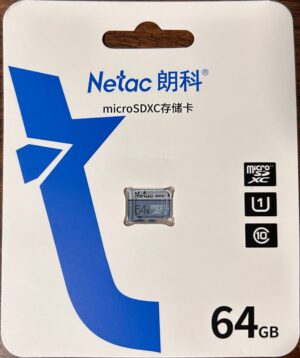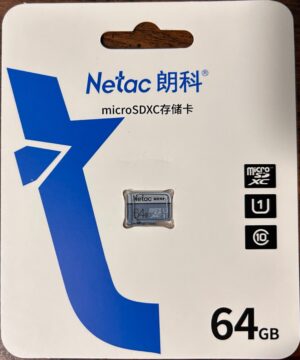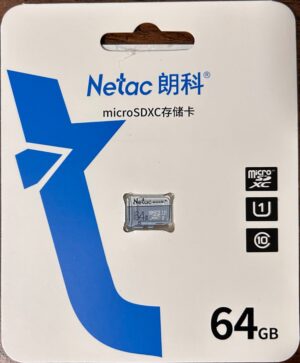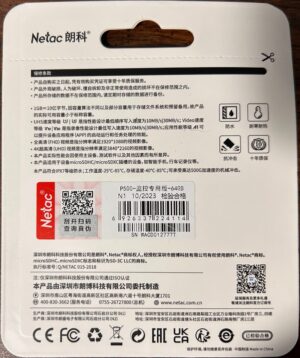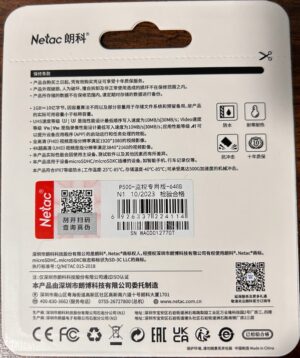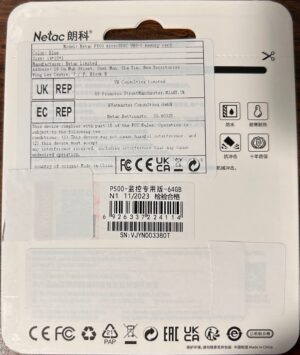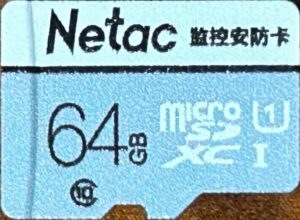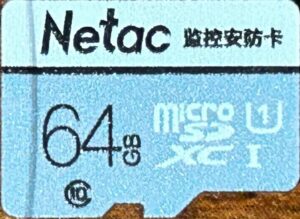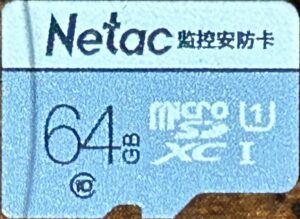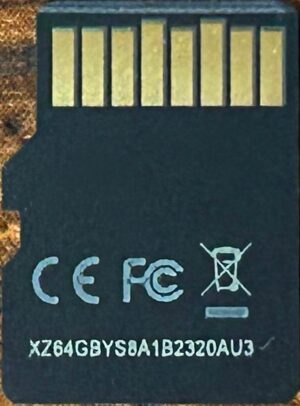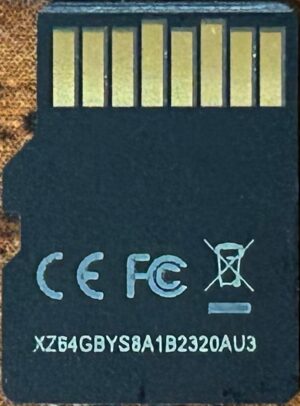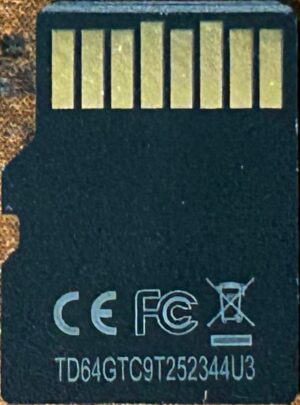- Obtained from: AliExpress
- Price paid: $1.99
- Advertised capacity: 64GB
- Protected area: 134,217,728 bytes
- Speed class markings: C10, U1
- CID data:
- OEM ID:
0x0303 - Product revision:
0x10
- OEM ID:
Discussion
As I mentioned with the Netac PRO 16GB (below), Netac has the rare distinction of being the first card I’ve come across that was significantly bigger than what was advertised. It wasn’t a card that was part of this survey — it was an 8GB card that came with one of my 3D printers, and it turned out to be a 16GB card that was simply partitioned with a single 8GB partition. The fact that I purchased these cards simply reflected my curiosity to see if I could make this happen again (although admittedly, the chances of a manufacturer disguising a 128GB card as a 64GB card are pretty low — but then again, the chances of a manufacturer disguising a 16GB card as an 8GB card are pretty low too, but it would be less expensive to do so). However, this turned into another case study of what happens when you source your microSD cards from multiple manufacturers.
There seems to be a pretty clear difference between samples #1 and #2 and sample #3. The first obvious difference is the back of the package: samples #1 and #2 have a wealth of information, including a seal of authenticity, on the back of the package. However, on sample #3, stickers have been used to cover up all of this information. While the normal product packaging has text that is mostly in Chinese, one of the stickers has text that is completely in English — including a FCC Part 15 disclaimer, the manufacturer’s name and address, and the name and address of the UK and European distributors. This suggests to me that they might have intended to prepare this card for sale in English-speaking regions, including the US and the EU.
The next difference is the difference in the card artwork. Samples #1 and #2 have artwork that is a little darker than sample #3 — although it’s hard to tell from the pictures because samples #1 and #2 have a little bit of color correction applied to them.
The next difference comes when the card is plugged in: samples #1 and #2 have a different manufacturer ID and product name than sample #3. Samples #1 and #2 have a manufacturer ID of 0x6f and a product name of SDABC, while sample #3 has a manufacturer ID of 0x89 and a product name of NCard…wait a second — I’ve seen this before. This is exactly what sample #1 of the Netac PRO 16GB (below) showed after it failed! I’m so confused now. Did sample #3 really come from a different manufacturer, or did it simply come from a manufacturer that has more than one manufacturer ID assigned to them? If they came from different manufacturers, then what’s going on with sample #1 of the Netac PRO 16GB? Did the manufacturer spoof another manufacturer’s manufacturer ID???
Well at any rate, let’s move on to the next obvious difference: performance. There was a definite difference in performance between samples #1 and #2 and sample #3. None of them did particularly well — especially in random I/O speeds — but sample #3 set some new lows: 0th percentile for sequential read speed, 2nd percentile for sequential write speeds, 0th percentile for random read speeds, and 26th percentile for random write speeds. Sequential read speeds, sequential write speeds, and random read speeds were all more than one standard deviation below average. The other two samples fared a little better, but were still pretty terrible: the best single measurement was the sequential write speed from sample #2, and that only put it into the 50th percentile in that category.
Finally, let’s move on to endurance: sample #3 also experienced its first error earlier than the other two. All three are still undergoing endurance testing:
- Samples #1 and #2 have not yet hit the 2,000 read/write cycle mark. They are expected to get there sometime in October 2024.
- Sample #3’s first error was a series of bit flip errors affecting 1,450 sectors during round 4. It has survived 271 read/write cycles in total so far.
June 15, 2024 (current number of read/write cycles is updated automatically every hour)


